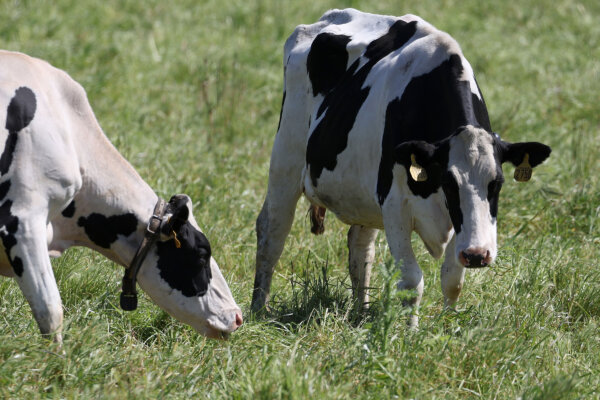Bird Flu Virus Exposure Causes Severe Disease in Mammals
Researchers supported by the National Institutes of Health (NIH) reported on Monday that the currently circulating “highly pathogenic” H5N1 viruses extracted from dairy cattle induced severe disease in mice and ferrets when administered intranasally.
The virus from the H5N1-infected cows was able to bind to both bird and human-type cellular receptors, which is a novel finding, the authors noted.
However, according to the research conducted, these bovine or cow viruses “do not appear capable of efficient respiratory transmission between animals or people.”
Avian Flu Infects Cows
The NIH said there was an outbreak of this bovine influenza among American dairy cattle in March 2024, which also infected four dairy workers, as well as infecting cats and poultry.
As of May 30, 2024, the USDA confirmed 69 infected bovine herds in nine states, with the spread thought to be secondary to cattle movement between states.
Monday’s government release asserted that these cow viruses are closely related to the H5N1 bird viruses, which have circulated in wild birds of North Americ ever since late 2021.
However, the researchers acknowledged in their report that “the basic characteristics of the bovine H5N1 viruses are unknown.” Their subsequent testing of a replicated virus taken from the milk of an infected dairy cow from New Mexico was the basis of their recent experiments with mice and ferrets.
Researchers found “Increased Public Health Risk”
The researchers assessed public health risk by feeding milk from an infected cow to mice.
This led to rapid induction of disease symptoms on the first day after infection and virus spread to respiratory and non-respiratory organs by day 4.
Based on the collective findings, the authors suggest an “increased public health risk.”
This suggestion is in part based on the investigators’ findings that bovine HPAI H5N1 virus binds to sialic acids expressed in human upper airways; the virus “thus possesses features that may facilitate infection and transmission in mammals.”
The researchers conducted the experiments to analyze the ability of bovine HPAI H5NI to replicate and cause disease in mice and ferrets.
The researchers exposed mice to intranasal doses of the bovine virus (five mice in each group) and observed their survival and body weight changes for 15 days. The five mice that received higher doses of the virus died of the infection. Some of the five mice that received the lower dose survived, while all the mice exposed to the lowest dose survived and lost no weight.
Cow viruses did not transmit well by air
The authors also tested how the mice would fare with a H5N1 bird virus versus the bovine virus.
Those mice that received either virus “experienced high virus levels in respiratory and non-respiratory organs,” as well as in the mammary glands, muscle tissues and eyes.
Using ferret models, the researchers tested whether bovine viruses (bovine HPAI H5N1 virus or H1N1 influenza) transmitted via respiratory droplets. Only the ferrets caged next to H1N1-infected animals manifested illness. This indicated “that the cow influenza virus does not transmit efficiently via respiratory droplets in ferrets,” the government release said.






